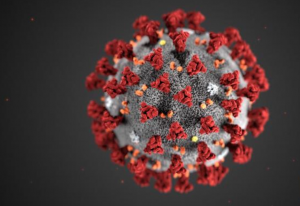People who have been diagnosed with obstructive sleep apnea could be at increased risk of adverse outcomes from COVID-19 according to a new study from the University of Warwick.

The conclusion is drawn from a systematic review of studies that reported outcomes for COVID-19 patients that were also diagnosed with obstructive sleep apnea. Published in the journal Sleep Medicine Reviews, the review highlights the need to further investigate the impact of the virus on those with the sleep condition and to better identify those currently undiagnosed with it.
Obstructive sleep apnea is a condition characterized by complete or partial blockage of the airways during sleep when the muscles there become weaker. It is commonly diagnosed in people who snore or appear to stop breathing or make choking sounds during sleep, and those who are obese in particular are more likely to experience it. If you are told that you make strange noises when you sleep or seem to stop breathing during sleep, you should speak to their GP about being referred to a sleep service to be checked for the condition.
Many of the risk factors and comorbidities associated with sleep apnea, such as diabetes, obesity and hypertension, are similar to those associated with poor COVID-19 outcomes. However, the researchers wanted to investigate whether being diagnosed with obstructive sleep apnea conferred an additional risk on top of those factors.
The systematic review looked at eighteen studies up to June 2020 with regards to obstructive sleep apnea and COVID-19, of these eight were mainly related to the risk of death from COVID-19 and ten were related to diagnosis, treatment and management of sleep apnea. Although few studies of obstructive sleep apnea in COVID-19 had been performed at the time, there is evidence to suggest that many patients who presented to intensive care had obstructive sleep apnea and in diabetic patients it may confer an increased risk that is independent of other risk factors. In one large study in patients that had diabetes, who were hospitalized for COVID-19, those being treated for obstructive sleep apnea were at 2.8 times greater risk of dying on the seventh day after hospital admission.
Researchers believe that in the UK up to 85% of obstructive sleep apnea disorders are undetected, suggesting that the 1.5 million people in the UK currently diagnosed with the condition may be just the tip of the iceberg. With obesity rates and other related risk factors on the increase, the researchers also believe that rates of obstructive sleep apnea are also increasing. The review highlights that the pandemic has also had worldwide effects on the ongoing diagnosis, management and treatment of patients with this and other sleep conditions. Moving forward it may be necessary to explore new diagnosis and treatment pathways for these individuals.
Lead author of the study Dr Michelle Miller of Warwick Medical School said: “Without a clear picture of how many people have obstructive sleep apnea it is difficult to determine exactly how many people with the condition may have experienced worse outcomes due to COVID-19.
“This condition is greatly underdiagnosed, and we don’t know whether undiagnosed sleep apnea confers an even greater risk or not.
“It is likely that COVID-19 increases oxidative stress and inflammation and has effects on the bradykinin pathways, all of which are also affected in obstructive sleep apnea patients. When you have individuals in which these mechanisms are already affected, it wouldn’t be surprising that COVID-19 affects them more strongly.”
Treatment for obstructive sleep apnea with continuous positive airway pressure (CPAP) has been shown to have some beneficial effects on these mechanisms and it is important that treatment is optimized for these individuals. In the UK, the British Sleep Society with the OSA alliance has released guidelines with regards to the use of CPAP during the pandemic.
The researchers feel it is important that those diagnosed with obstructive sleep apnea are aware of the potential additional risk and are taking appropriate precautions to reduce their exposure to the virus. Further research is required to determine whether these individuals need to be added to the list of vulnerable groups that may need to shield if transmission of virus increases.
Dr Miller adds: “This is a group of patients that should be more aware that obstructive sleep apnea could be an additional risk if they get COVID-19. Make sure you are compliant with your treatment and take as many precautions as you can to reduce your risk, such as wearing a mask, social distancing and getting tested as soon as you notice any symptoms. Now more than ever is the time to follow your treatment plan as diligently as possible.
“Hospitals and doctors should also be recording whether their patients have obstructive sleep apnea as a potential risk factor, and it should be included in studies and outcomes data for COVID-19. We need more data to determine whether this is something we should be more concerned about.”

